Nissan Versa (N17): Diagnosis and repair workflow
Trouble Diagnosis Flow Chart
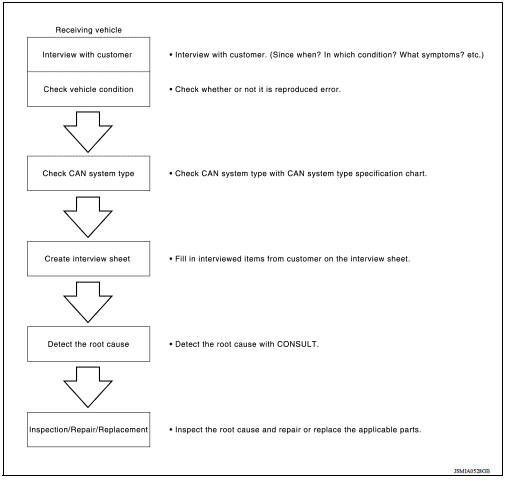
Trouble Diagnosis Procedure
INTERVIEW WITH CUSTOMER
Interview with the customer is important to detect the root cause of CAN communication system errors and to understand vehicle condition and symptoms for proper trouble diagnosis.
Points in interview
- What: Parts name, system name
- When: Date, Frequency
- Where: Road condition, Place
- In what condition: Driving condition/environment
- Result: Symptom
Notes for checking error symptoms:
- Check normal units as well as error symptoms.
- Example: Circuit between ECM and the combination meter is judged normal if the customer indicates tachometer functions normally.
- When a CAN communication system error is present, multiple control units may malfunction or go into failsafe mode.
- Indication of the combination meter is important to detect the root cause because it is the most obvious to the customer, and it performs CAN communication with many units.
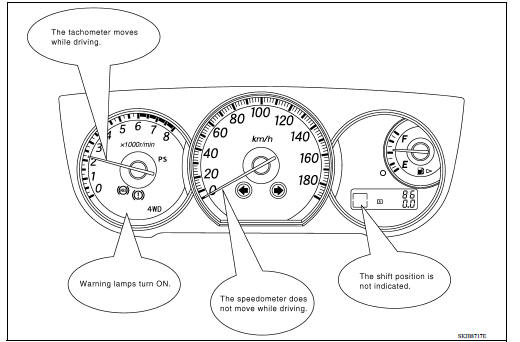
INSPECTION OF VEHICLE CONDITION
Check whether the symptom is reproduced or not.
NOTE: Do not turn the ignition switch OFF or disconnect the battery cable while reproducing the error. The error may temporarily correct itself, making it difficult to determine the root cause.
CHECK OF CAN SYSTEM TYPE (HOW TO USE CAN SYSTEM TYPE SPECIFICATION CHART)
Determine CAN system type based on vehicle equipment.
NOTE:
- This chart is used if CONSULT does not automatically recognize CAN system type.
- There are two styles for CAN system type specification charts. Depending on the number of available system types, either style A or style B may be used.
CAN System Type Specification Chart (Style A)
NOTE: CAN system type is easily checked with the vehicle equipment identification information shown in the chart.
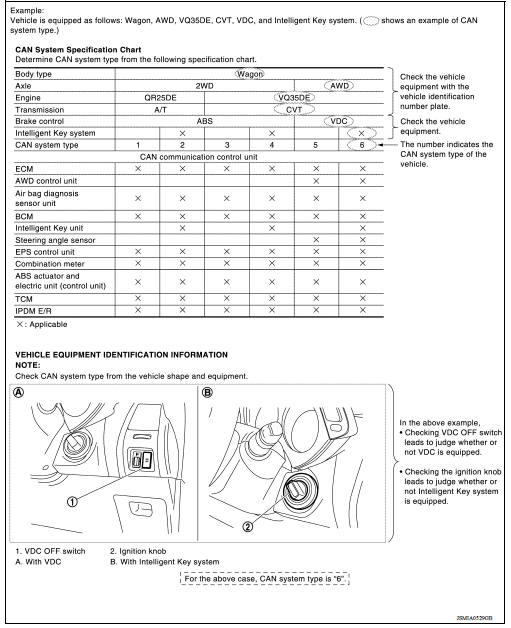
CAN System Type Specification Chart (Style B)
NOTE: CAN system type is easily checked with the vehicle equipment identification information shown in the chart.
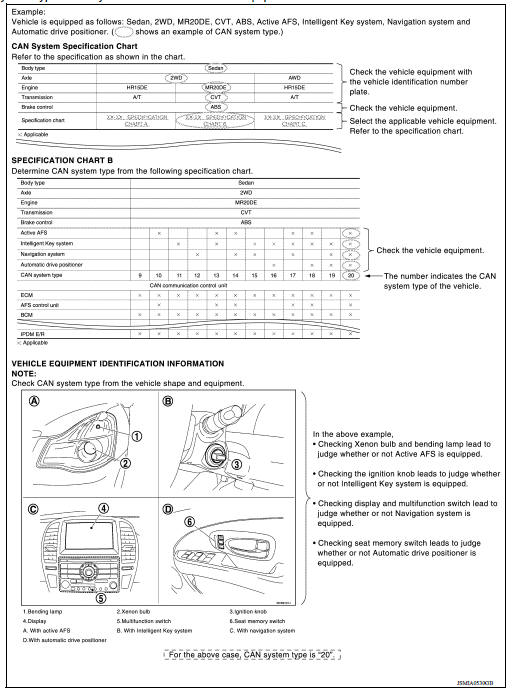
CREATE INTERVIEW SHEET
Fill out the symptom described by the customer, vehicle condition, and CAN system type on the interview sheet.
Interview Sheet (Example)
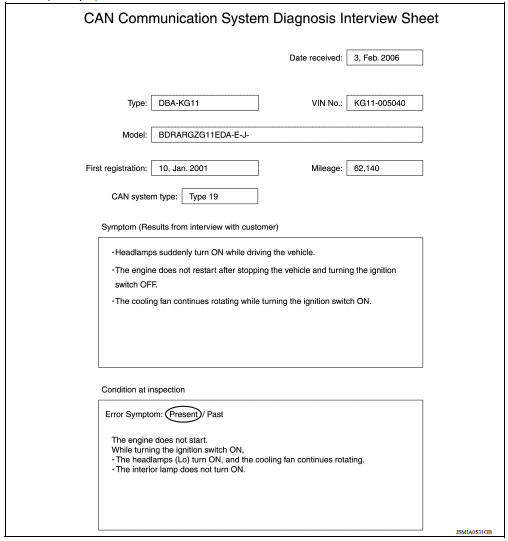
DETECT THE ROOT CAUSE
CAN diagnosis function of CONSULT detects the root cause.
HOW TO USE THIS MANUAL
HOW TO USE THIS SECTION
Information
- "CAN" of LAN Section describes information peculiar to a vehicle and inspection procedures.
- For trouble diagnosis procedure, refer to LAN "Trouble Diagnosis Flow Chart" of "CAN FUNDAMENTAL".
Abbreviation List
Unit name abbreviations in CONSULT CAN diagnosis and in this section are as
per the following list.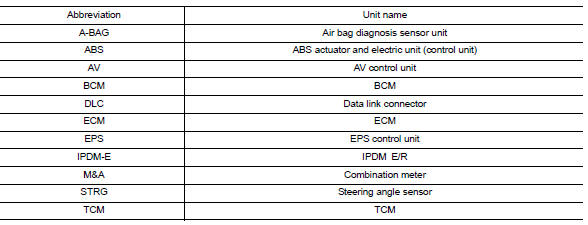
 Trouble diagnosis
Trouble diagnosis
Component Description ...
Other materials:
P0846 Transmission fluid pressure
SEN/SW B
DTC Logic
DTC DETECTION LOGIC
DTC
Trouble diagnosis name
DTC detection condition
Possible causes
P0846
Transmission Fluid Pressure
Sensor/Switch B Circuit
Range/Performance
The detection conditions continuously for 5
seconds or more under the following diagn ...
Intelligent key battery
Removal and Installation
1. Release the lock knob at the back of the Intelligent Key and remove the
mechanical key.
2. Insert a suitable tool (A) wrapped with a cloth into the slit of the
corner and twist it to separate the upper part from the lower part.
CAUTION:
Do not touch the circuit ...
Categories
- Manuals Home
- Nissan Versa Owners Manual
- Nissan Versa Service Manual
- Video Guides
- Questions & Answers
- External Resources
- Latest Updates
- Most Popular
- Sitemap
- Search the site
- Privacy Policy
- Contact Us
0.0046

